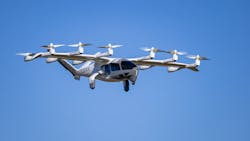Archer Receives Part 145 Certification
Archer Aviation Inc., a company designing and developing electric vertical takeoff (eVTOL) and landing aircraft for use in urban air mobility networks, has received Part 145 certification from the Federal Aviation Administration (FAA).
“This is a major vote of confidence from the FAA on Archer’s promise and potential for operating a full-scale urban air mobility service in cities across the country,” said Adam Goldstein, founder and CEO of Archer. “As we continue to rapidly advance towards commercial operations, we will be working closely with the FAA and regulators around the world to ensure Archer’s aircraft are safe and ready to transform mobility, providing a sustainable, low noise, and cost competitive alternative to decongest our biggest cities.”
What is Part 145 certification?
The FAA’s Part 145 certification is essential for commercial aviation operators and original equipment manufacturers (OEMs), authorizing them to conduct specific maintenance and repair tasks on crucial aircraft components such as airframes. This certification represents a commitment to stringent safety and operational standards, including the meticulous handling and shipment of hazardous materials. It further demonstrates that Archer is prepared to operate repair stations that meet the FAA's rigorous safety and quality benchmarks. As a mark of trust and reliability, it guarantees that maintenance and repairs are executed by authorized experts, ensuring that operations like Archer's adhere strictly to federal regulations, thus enhancing the safety and security of airline operations and passenger travel.
What is Archer’s goal?
Archer’s goal is to transform urban travel, replacing 60–90-minute commutes by car with estimated 10-20 minute electric air taxi flights that are safe, sustainable, low noise, and cost-competitive with ground transportation. Archer’s Midnight is a piloted, four-passenger aircraft designed to perform rapid back-to-back flights with minimal charge time between flights.
The company continues making progress toward its planned commercialization in 2025.
